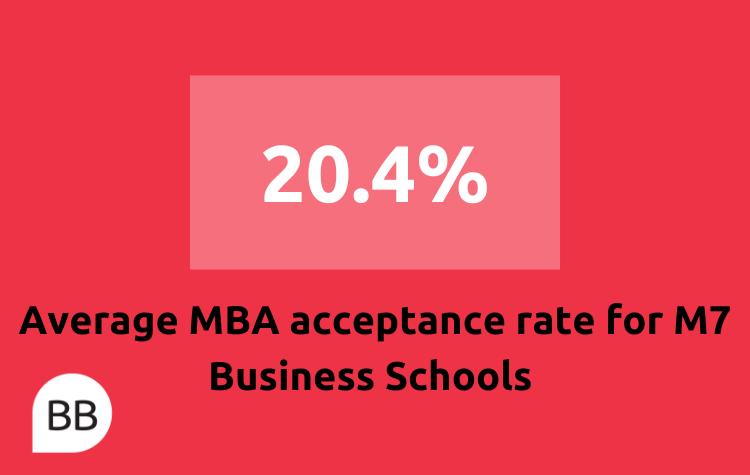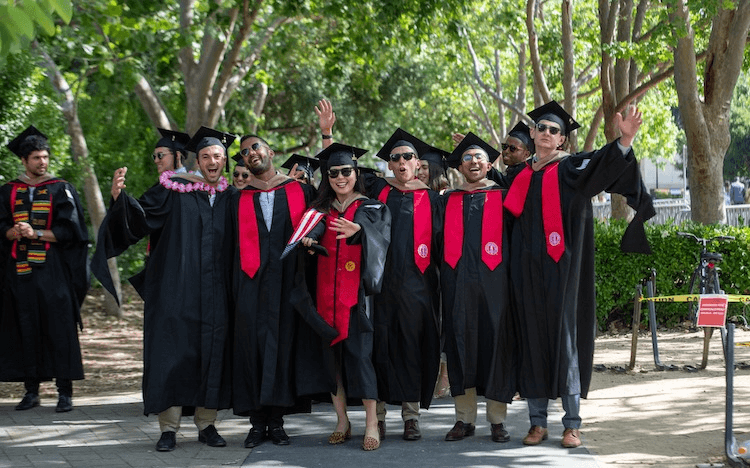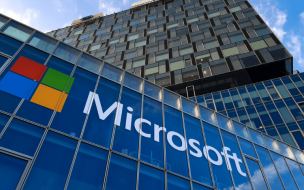If you’re applying to an MBA program at one of the world’s top business schools, you’ll want to know the MBA acceptance rates.
Acceptance rates are the percentage of applicants who are admitted into an MBA program. They tell you how competitive a school is and how likely your MBA application is to be successful.
Applying for a top MBA?
Download our MBA Application Guide
Stanford’s MBA acceptance rate is 8.6% on average, making Stanford the world’s most competitive MBA program. The most recent data shows 6,152 people applied to the full-time MBA at Stanford Graduate School of Business but only 528 got accepted.
Fewer still enrolled in the Stanford MBA class—only 424 (an enrollment rate of 6.9%). Schools will always admit more candidates than they enroll, with many accepting offers from other schools or dropping out.
BusinessBecause has used data from the US News Report and other available sources to break down the MBA acceptance rates at top schools—including the M7 business schools.

MBA Acceptance Rates for top business schools
While last year saw a less competitive application cycle with higher acceptance rates to top MBAs, the upcoming MBA application cycle is set to be significantly more competitive.
This can be seen in high number of...
The M7 business schools received an average of 5,752 MBA applications in the latest numbers. With the average class size of these schools at 644 for the intake, only a select number of applicants are admitted, with their applications, essays, and GMAT scores scrutinized by admissions teams before a final interview.
The average MBA acceptance rate for the M7 business schools is 20.4%.

After Stanford, Harvard, the MBA with the highest number of applicants, boasts the next most competitive MBA acceptance rate, at 14.4%. 8,264 people applied to the MIT Sloan MBA, but only 1,187 got accepted and 1,015 enrolled (an enrolment rate of 12.3%).
More business schools with super-competitive MBA acceptance rates include MIT: Sloan (14.8%), HEC Paris (18%), and Berkeley: Haas (19.6%). We estimate the INSEAD MBA acceptance rate to be around 32%, based on various online sources.
Despite its exclusion from the FT 2023 MBA ranking due to a lack of data, the Wharton MBA acceptance rate is 22.8% and the Yale MBA acceptance rate is 27.6%, while the CEIBS acceptance rate is a friendlier 42%.
Business schools with less competitive acceptance rates include SDA Bocconi, at 38%, as well as McCombs School of Business at 34.1%.
While MBA acceptance rates tend to be most competitive at the top US schools, and are sometimes seen as an indicator of program demand and value, they don’t tell you about the quality of the candidates applying.
To assess the quality of the MBA class, you’re better off looking at class average GMAT scores or GMAT score ranges.
BusinessBecause has found that the quality of candidates applying remains high, with schools reporting no significant drop in academic indicators or professional preparation among MBA applicants despite rising applications.
*The MBA acceptance rates for SDA Bocconi, LBS, INSEAD, HEC Paris, IESE, and CEIBS are estimates based on various online reports. The schools do not share detailed admissions data. US business school figures are taken from the US News Report.
While the MBA acceptance rate is the percentage of applicants admitted into the program, the MBA enrolment rate is the percentage of those applicants who actually enroll.
Enrollment rates are less useful in assessing how competitive each school is due to the drop off in accepted candidates, but comparing acceptance and enrollment rates can provide interesting insights.
Stanford’s MBA enrollment rate, the lowest, is consistent with its competitive acceptance rate. However, Berkley Haas and NYU Stern records significantly lower enrollment rates (7.8% and 9.1% respectively) than its acceptance rates (19.6% and 27.1%).
This means a significant number of candidates who were accepted into those schools ultimately chose not to enroll. Most likely, they decided to defer or chose alternative schools.
The lack of difference between Stanford and Harvard’s acceptance and enrollment rates demonstrates the popularity of them compared with other schools. Of the 528 students admitted to Stanford, only 104 did not enroll, while of the 1,187 accepted to Harvard more than 1,000 enrolled. (In short, if you get an offer from Stanford or Harvard, you most likely take it!)
MBA applicants can expect a more competitive admissions cycle in the US in 2023. While last year saw a less competitive admissions cycle, especially in domestic applications, some candidates might be disappointed to hear the 2024 cycle could be marginally more competitive, according to research.
In the wake of the pandemic, last year saw a dip in MBA applications with a 6.5% dip in applications to MBA programs after growing 3.8% in 2021, according to the Graduate Management Admissions Council (GMAC) Application Trends Survey.
However, this year has seen a wave of layoffs among young professionals meaning admissions experts are predicting a growth in MBA applications as a result.
If you’re considering applying to MBA programs this year, download our free BusinessBecause MBA Application Guide
Register for free to continue reading
Student Reviews
Carnegie Mellon: Tepper
RECAPTHA :
2c
25
bd
b1













The best of our Premium Articles